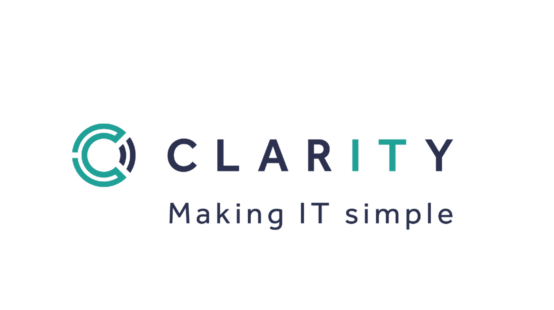
Introduction
Generative AI is revolutionising industries, including Jersey’s financial services sector, which encompasses trust and corporate services, fund administration, banking, and wealth management. As businesses embrace these technologies, understanding the opportunities and cybersecurity risks is essential for business leaders to navigate them carefully.
Trends in Generative AI Adoption
Generative AI, powered by models like GPT-4, Codex, and BERT, is reshaping business operations across various sectors. In Jersey’s financial services, this technology enhances efficiency, compliance, and strategic decision-making.
AI-driven chatbots and virtual assistants are revolutionising client service by enabling personalised interactions, improving service efficiency, and increasing client satisfaction.
In trust and corporate services, AI automates responses to client inquiries about account status and document requirements. Similarly, in fund administration, AI provides real-time updates on fund performance and assists with investor queries, ensuring timely and accurate information delivery.
In risk management, AI models can analyse vast datasets to predict market trends, assess risks, and optimise investment strategies. In wealth management, generative AI develops tailored investment strategies aligning with clients’ financial goals and risk tolerance, allowing for more precise, data-driven decisions.
AI significantly enhances fraud detection by using advanced algorithms to identify unusual transaction patterns and potential fraud in real time. In trust and corporate services, AI detects anomalies such as unauthorised access or irregular fund transfers. In fund administration, AI continuously monitors transactions, identifying potential fraud risks and enabling rapid mitigation. Additionally, AI strengthens due diligence by cross-referencing client information with fraud databases, flagging potential risks for further investigation.
Regarding regulatory compliance, AI streamlines processes by automating document drafting and ensuring adherence to evolving standards. In trust and corporate services, AI assists in drafting legal documents, verifying compliance, and reducing the risk of non-compliance, thereby improving operational efficiency.
AI also boosts staff productivity by automating repetitive tasks, allowing employees to focus on higher-value activities. In fund administration, AI manages complex calculations, report generation, and investor communications, reducing manual workload. Tools like ChatGPT and Microsoft Copilot enhance workplace efficiency by drafting emails, creating documents, answering routine queries, and providing instant information, enabling employees to focus on critical decision-making and innovation.
Cybersecurity Challenges of Generative AI
While generative AI offers numerous benefits, it also introduces new cybersecurity challenges that organisations must address to safeguard their operations and data.
The adoption of AI varies across organisations, as highlighted by our recent poll conducted during the Discover How AI Can Transform Your Business event. The results showed that 40% of attendees are actively integrating AI into their operations, while 35% are in the exploratory phase, assessing its potential before implementation. However, 25% of respondents cited concerns over cybersecurity and compliance as key factors slowing down adoption. These insights underscore the importance of addressing security risks and regulatory challenges to accelerate AI adoption in the financial services sector.
A major concern is data privacy and security. Generative AI systems rely on vast amounts of data to function effectively, making it critical to ensure that sensitive information remains protected, particularly in the financial sector where customer data is highly confidential. Without proper safeguards, AI-driven processes could become vulnerable to breaches, exposing private financial details to malicious actors.
Another risk is model exploitation and intellectual property theft. Cybercriminals can manipulate AI models by feeding them altered data, leading to biased outputs or unauthorised access to confidential information—an attack method known as adversarial AI. Additionally, generative AI’s ability to replicate and generate content raises concerns about the unauthorised use of proprietary data and intellectual property, potentially infringing on copyrights and trade secrets.
AI-generated phishing and social engineering attacks present further security challenges. With generative AI capable of crafting highly convincing phishing emails, cybercriminals can more easily deceive employees, leading to unauthorised system access and data breaches. The increasing sophistication of these attacks makes traditional security awareness training less effective, necessitating more advanced defensive measures.
The rise of shadow IT is another issue organisations must contend with. Employees who independently subscribe to or build generative AI agents without IT department oversight may unknowingly introduce security risks. These unauthorised AI tools may not comply with corporate security policies, potentially leading to data leaks, compliance violations and system vulnerabilities.
Finally, regulatory compliance remains a complex challenge. As governments and regulatory bodies continue to refine AI and data protection laws, businesses must stay ahead of evolving regulations to avoid legal repercussions and reputational damage. Failing to comply with these regulations could result in financial penalties, operational disruptions, and loss of stakeholder trust.
To fully harness the potential of generative AI while mitigating these risks, organisations must implement robust cybersecurity strategies, enhance regulatory compliance efforts, and ensure continuous monitoring of AI-driven processes.
Mitigating Cybersecurity Risks: Strategic Considerations
To harness the benefits of generative AI while mitigating cybersecurity risks, business leaders in Jersey must adopt a proactive and strategic approach. Secure AI adoption requires careful planning and robust safeguards to protect sensitive data, ensure compliance, and build resilience against emerging threats.
A strong foundation begins with data governance and security frameworks.
Businesses must implement comprehensive data governance policies to ensure the ethical use of AI-driven processes. Encrypting sensitive data both in transit and at rest, applying anonymisation techniques where feasible, and conducting regular data audits help identify and address vulnerabilities before they are exploited.
Equally important is AI model security. Organisations must protect their AI models from adversarial attacks by integrating security measures such as adversarial training, which exposes models to potential threats during development. Additionally, techniques like differential privacy can prevent the extraction of sensitive information from AI-generated outputs, reducing the risk of data leaks and unauthorised access.
Employee training and awareness play a crucial role in mitigating AI-related risks. As AI-generated phishing and social engineering attacks become increasingly sophisticated, businesses must educate employees on recognising and responding to these threats.
Regular cybersecurity training programs help staff stay informed about evolving attack tactics and best practices for safeguarding corporate systems.
Regulatory compliance is another key consideration. Organisations must stay up to date with local and international regulations concerning AI and data protection, ensuring adherence to frameworks such as GDPR and Jersey’s Data Protection Law. With the upcoming Jersey Cyber Law set to strengthen cybersecurity measures, businesses should engage with legal and compliance experts to navigate evolving regulatory requirements effectively.
Conclusion
Generative AI is revolutionising Jersey’s financial services sector, offering significant benefits and cybersecurity challenges. By strategically implementing AI with a focus on data security, employee awareness, regulatory compliance, and robust incident response, business leaders can leverage AI’s power while protecting their organisations from emerging threats. Secure AI adoption requires ongoing vigilance, adaptability, and a commitment to cybersecurity excellence




